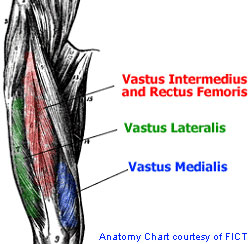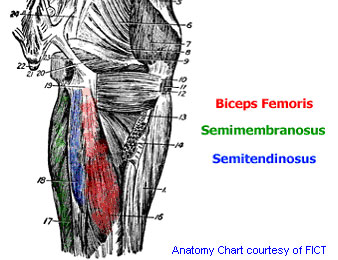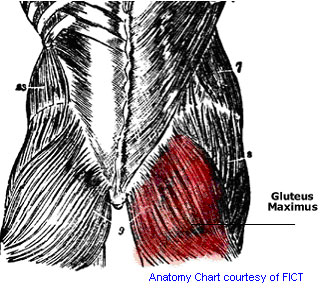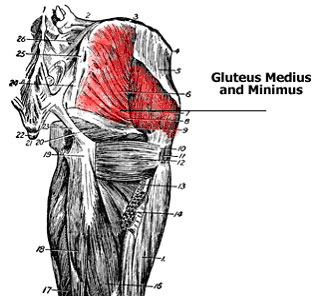

Strength
Promoting healthy weight training programs as it relates to joint health for young female athletes
Allen Jackson, M.Ed. ABD, Larry W. McDaniel, Ed.D., & Laura Gaudet, PhD., discuss the processes related to the promotion of healthy strength training programs related to joint health for female athletes.
What are the considerations for the joint health of adolescent female athletes?
In a literature review conducted by Ms Moore, there was a focus on the ACL tear with injuries occurring during soccer competitions. In Allison Aubrey's article, "Training May Curb Some Sports Injuries in Women", it was noted that females are more prone to knee injuries than their male counterparts. The research indicated that after boys go through puberty, they increase muscle development. Their glutes and hamstring muscles are much bigger and stronger, while females seldom experience this burst or increase in muscular strength. Females tend to be more dominant through the anterior compartment of the upper leg. The quadriceps and front muscles become thick, leaving the back muscles, such as the glutes and hamstrings, less developed, thus leading to a muscular imbalance through the anterior compartment of the upper leg. This condition puts more stress on the ACL, increasing the chance of injury (Moore, 2008)[8].
Recent research allows those involved in human performance to better understand the physiological differences between men and women and how these differences affect injury rates in female versus male athletes. Many factors influence this phenomenon. First and foremost are the anatomical and physiological differences between the sexes, the number of female athletes, and the intensity of competition (Oliver & Healy, 2008)[9].
By realizing one of the significant problems, we need to develop a hypothesis for a solution or minimise the risk of injury among female athletes. Dr McDaniel and I want our students (prospective teachers, coaches, and those in the field of exercise science) to realise those female athletes and the high rate of injury to the lower extremity lie in the imbalance between the different muscle groups in the upper leg. Our hypothesis centres on training for a better balance of these muscle groups. By creating greater strength and endurance between the agonist and the antagonist muscles involved in the lower extremity movement, we can minimise the occurrence of many sport-related injuries plaguing females who choose to participate in sport and recreation.
The Prescription
A significant aspect contributing to women's increased occurrence of sports injuries is that females seldom get training that focuses on fundamental movement patterns early on in life. As coaches, educators, and even those involved in administration, we need to ensure that young women receive proper instruction regarding certain basics such as form running, agility training, fast-feet drills, stop-start activities, jumping, and resistance training. Once the opportunity to teach these basic skills is lost, it becomes increasingly more difficult to counteract many of the neuromuscular deficiencies experienced by female athletes due to a lack of proper training during childhood and early adolescence (Oliver & Healy, 2008)[9].
Resistance Training for Women
When we approach training to prepare women to compete, there needs to be a sense of urgency in developing a balance of strength and endurance between opposing muscle groups, especially those involved in the movement of the lower extremities When we approach training to prepare women to compete. There needs to be a sense of urgency in developing a balance of strength and endurance between opposing muscle groups, especially those involved in the movement of the lower extremities (Marshall, n.d.)[7].
When we approach training to prepare women to compete, there needs to be a sense of urgency in developing a balance of strength and endurance between opposing muscle groups, especially those involved in the movement of the lower extremities (Marshall, n.d.)[7].
Strength Training Program
Advocating for women's strength training is easy once one realises the overall benefits. The best advice we can offer is to develop a program structured on diversity. This can be done by using various fitness components to assist young women in developing physiologically and emotionally by realizing their potential and achieving personal goals. This article focuses on creating a balance between the muscles of the anterior compartment of the upper leg and the muscles found in the posterior compartment of the upper leg.
 Anterior Muscles of the Upper Leg
Anterior Muscles of the Upper Leg
The muscles in the upper leg's anterior compartment make up the Quadriceps.
The quadriceps are the muscles in the upper leg's anterior compartment, and they include the rectus femoris, vastus intermedius, vastus lateralis, and vastus medialis.
These muscles are responsible for the extension of the knee, and as we have learned, these muscles are better developed in females than the muscles of the posterior compartment of the upper leg.
Exercises specific to training the Quadriceps include squats, hack squats, front squats, leg presses, leg extensions, overhead squats, and lunges (GymAddiction, 2002)[5].
Posterior Muscles of the Upper Leg
 The muscles of the posterior compartment make up the hamstrings and glutes.
The muscles of the posterior compartment make up the hamstrings and glutes.
The Hamstring group includes the semitendinosus, the semimembranosus, and the biceps femoris.
According to the literature, these muscles are not as developed in females as the muscles from the quadriceps group (Sokolove, 2008)[11].
The glutes consist of the gluteus maximus, one of the largest and strongest muscles in the body, the gluteus minimus, and the gluteus medius (Encyclopedia Britannica, 2008)[4].
The Hamstrings
The Hamstring muscles are responsible for the leg flexion at the knee and extension at the hip. Inadequate strength of the Hamstring muscles among females compared to the strength and development of the antagonistic quadriceps muscle group may compromise the basic biomechanical principles of the female athlete's lower extremities (Hetherington 2006)[6]. Exercises for the development of the Hamstrings include stiff-leg deadlifts, good mornings, deep squats, leg presses, lunges, and leg curls (GymAddiction, 2002)[5].
The Glutes
The gluteus minimus and medius stabilize the pelvis and vertebral column when one or the other foot is lifted. This action is accomplished by producing hip abduction. The gluteus maximus is the primary hip extensor. This muscle is engaged in climbing stairs and jumping activities (Stanford Visible Female, n.d.)[12]. Several exercises for developing the gluteus group of muscles include deep bucket squats, lunges, leg curls, and leg extensions at the hip (Gym Addiction, 2002)[5].
 |
 |
Additional Considerations
Gender differences in lower extremity landing mechanics and muscle activation have been identified as potential causative factors leading to increased anterior cruciate ligament injuries in female athletes. Female valgus knee alignment places more significant strain on the anterior cruciate ligament than a more neutral alignment. Gluteus medius activation may stabilize the leg and pelvis during landing, limiting valgus knee motion and potentially preventing anterior cruciate ligament injury (Russell et al. 2006)[10].
Two variables were studied to determine if frontal-plane knee angle and gluteus medius activation differ. The first is gender, and the second variable is the relationship between initial surface contact and maximal knee flexion during a single-leg drop landing. Thirty-two subjects, 18 through 30 years of age, were studied. Frontal-plane knee angle and gluteus medius average root mean square (aRMS) amplitude (a statistical measure of the magnitude of a varying quantity) at initial contact recognised women landing in knee valgus (the knee is turned outward, away from the medial aspect of the body). Men landing in knee varus (inwards towards the centre line of the body) (P < .025).
At maximal knee flexion, both men and women were in a position of knee varus, but the magnitude of varus was less in women than in me< .025); however, Russell et al. (2006)[10] have recognised that gluteus medius muscle activation differed little between the sexes and may not be critical in controlling frontal-plane knee joint motion. Women tended to land in more knee valgus before and at impact than men.
This means that gluteus medius muscle activation does not differ between the sexes and is not responsible for any differences in knee valgus. Therefore, the excessive valgus knee angles typical in most women may help explain gender inequality in anterior cruciate ligament injury compared to this type of injury among young men (Russell et al. 2006)[10].
Conclusion
The critical component in minimizing female athletes' injury risk involves developing and maintaining leg strength and endurance. Everyone wants their legs to be strong, pain-free, and attractive. Endurance activities like biking, swimming, walking, and running are highly recommended.
There are plenty of endurance activities to add diversity to any training program. Do not overlook plyometric training, but do not overuse it. Include agility training, especially drills that allow for stop-and-go movements, and most importantly, include resistance training to develop and maintain a proper balance in strength and endurance. You should hit the weight room to get the high-performing, well-defined legs most women are looking for, the kind that will turn heads (Claps, 2006)[3].
Reducing the risk of injury for female athletes also involves understanding that many females may have a five-degree difference in the angle of the femur at the hip joint from their male counterparts. This angle produces a condition named "Valgus", which most people may refer to as "knock-kneed". This condition is usually accompanied by the foot's inversion (medial rotation). These postural differences demand special consideration for females in training strategies.
The number of repetitions in jumps, foot strikes, weight lifting repetitions, other modes of training, and postural biomechanics of the hip, knee, and ankle joints needs to be closely monitored. The training needs involving females must focus on balancing the lower extremity muscles to prevent injury to female participants.
References
- BetterU, Inc (2008). Anatomy Chart. [WWW] Available from: https://www.fitstep.com/Advanced/Anatomy/.htm [Accessed October 20, 2008]
- CaringMedical.com (2008) Caring Medical & Rehabilitation Services
- CLAPS, F. (2006). Get great legs. [WWW] Available from: https://www.pennyfarthing.co.nz/Site/Blog/October_06/6_October_2006.aspx [Accessed October 17, 2008]
- Gluteus maximus (2008). In Encyclopaedia Britannica. [WWW] Available from: Encyclopaedia Britannica Online: https://www.britannica.com/EBchecked/topic/235995/gluteus-maximus [Accessed October 16, 2008]
- GymAddiction.com. (2002). Hamstrings [WWW] Available from: https://www.gymaddiction.com/exercises/hamstrings.html [Accessed October 16, 2008]
- HETHERINGTON, N. (2006). How to improve the function of the hamstring muscles for speed. [WWW] Available from: https://www.brianmac.co.uk/articles/scni28a4.htm [Accessed October 16, 2008]
- MARSHALLl, J. (n.d.). Weight training for women: Why women avoid weight training - and how coaches can change their minds. Peak Performance.
- MOORE, S. (2008). Biomechanics discussion board. Biomechanics of Sport, Fall. Chadron State College.
- OLIVER, D. and HEALY, D. (2005). Athletic Strength for Women. Human Kinetics Publishers, Inc. 2008
- RUSSELL, K.A. et al. (2006). Sex Differences in Valgus Knee Angle During a Single-Leg Drop Jump. Journal of Athletic Training, 41 (2), p. 166-171.
- SOKOLOVE, M. (2008). The uneven playing field. The New York Times, May 11, 2008. [WWW] Available from: https://www.nytimes.com/2008/05/11/magazine/11Girls-t.html?_r=1&pagewanted=1&oref=slogin [Accessed October 16, 2008]
- Stanford Visible Female (n.d.). Function of the gluteus muscles. [WWW] Available from: https://www.google.com/search?hl=en&q=Gluteus+muscles&btnG=Search [Accessed October 16, 2008]
Page Reference
If you quote information from this page in your work, then the reference for this page is:
- JACKSON, A. et al. (2009) Promoting healthy weight training programs as it relates to joint health for young female athletes [WWW] Available from: https://www.brianmac.co.uk/articles/article046.htm [Accessed
About the Authors
Allen Jackson, M. Ed., is an Assistant Professor of Physical Education and Health at Chadron State College in Chadron, Nebraska (USA) who is well known for his presentations & publications at international conferences focusing on Leadership, Curriculum, and Health.
Dr Larry W. McDaniel, Ed.D., is an Associate Professor of Exercise Science at Dakota State University, Madison, SD. USA. Dr McDaniel was a First Team All-American football player (USA Football), a Hall of Fame Athlete, and a Hall of Fame Wrestling Coach.
Dr Laura Gaudet, Ph. D., is a Professor and Chair of the Department of Counselling, Psychology, and Social Work at Chadron State College, Chadron, Nebraska. She is well known for her publications and presentations at international conferences on various topics in psychology.